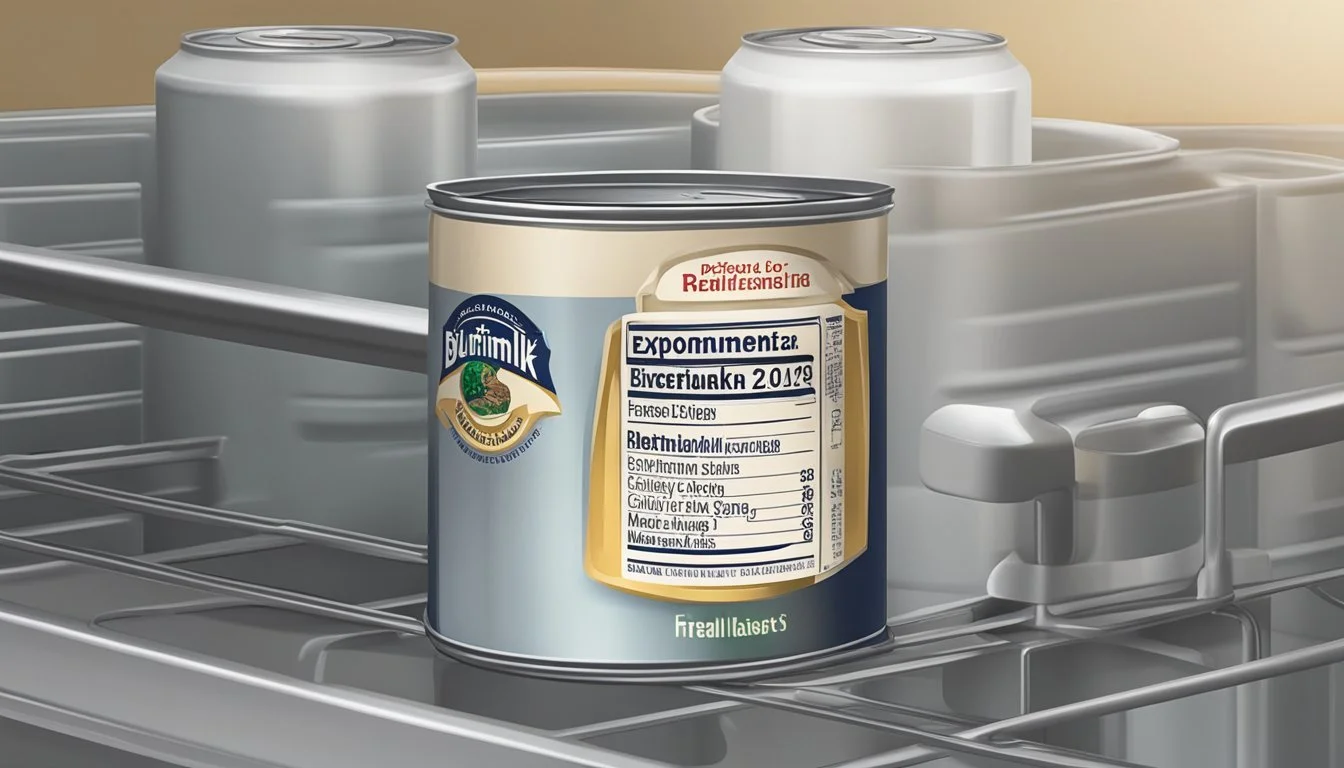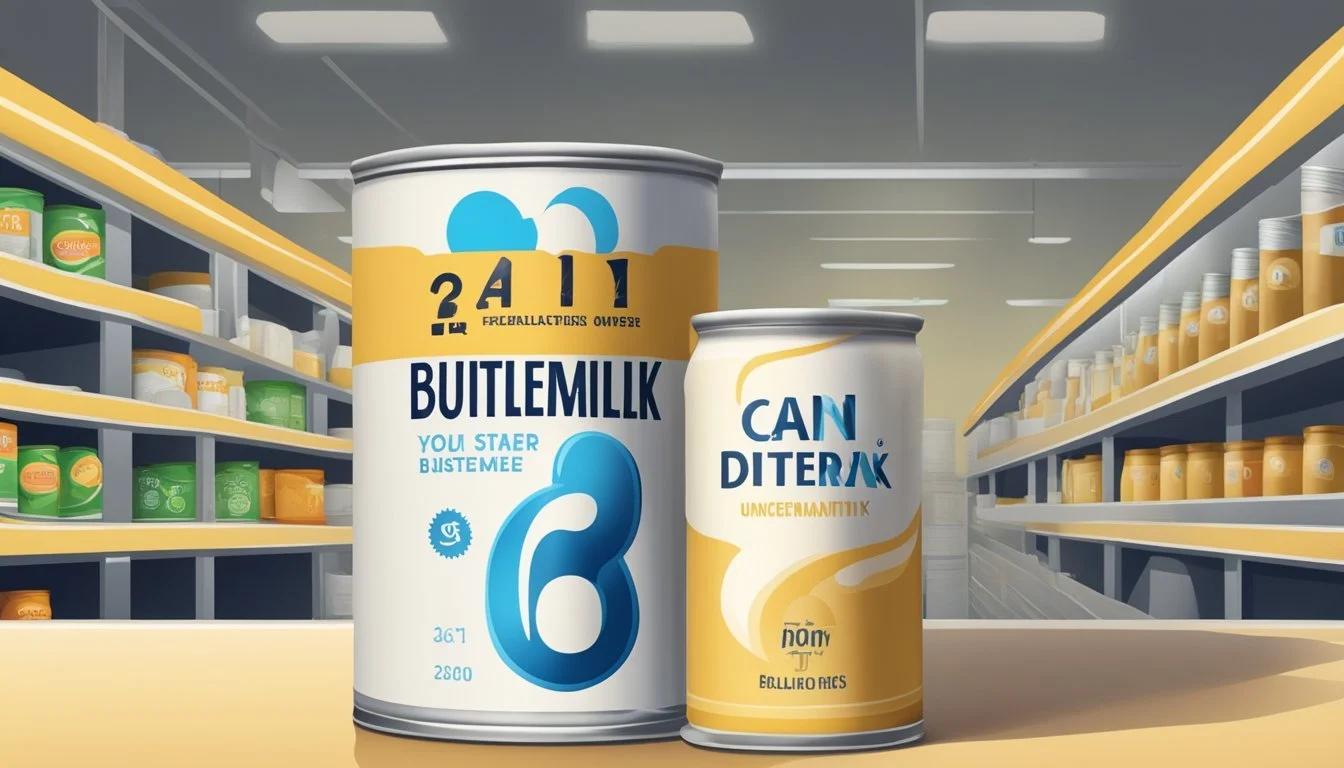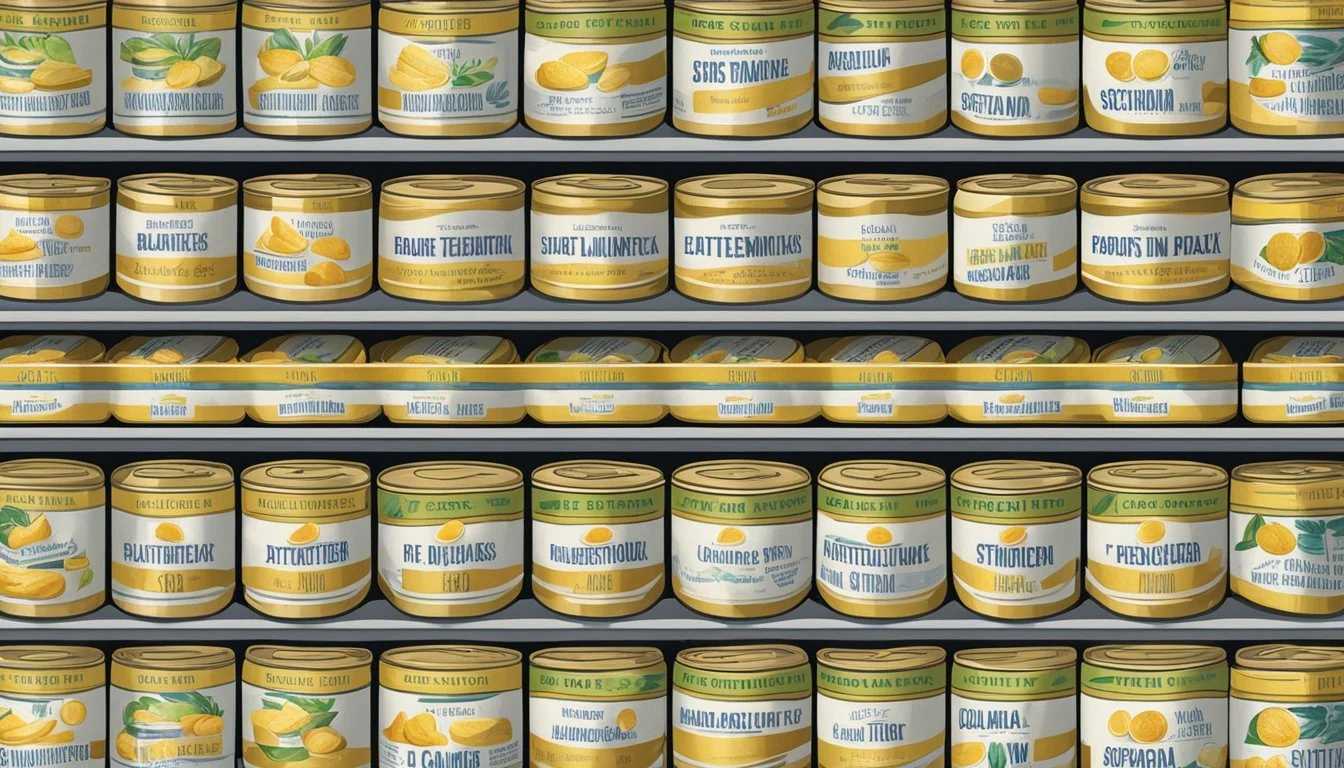Does Canned Buttermilk Expire?
Key Storage Tips and Shelf Life Information
The curiosity about whether canned buttermilk expires is quite common among home cooks and bakers. Canned buttermilk, a type of dairy product, has a longer shelf life compared to its fresh counterpart due to its packaging. Canned buttermilk typically lasts for a significant period beyond its expiration date if stored properly, primarily because the canning process helps preserve the product's quality and safety.
Storage plays a crucial role in extending the usability of canned buttermilk. It should be kept in a cool, dry place, away from direct sunlight and heat. Once opened, it's recommended to refrigerate any unused portion in an airtight container to maintain freshness. Signs that canned buttermilk has expired include noticeable changes in color, consistency, or an off-putting odor.
Understanding the indicators of spoilage can help prevent potential foodborne illnesses and ensure that your culinary creations always taste their best. By adhering to proper storage methods and paying attention to these signs, you can confidently use canned buttermilk well beyond its printed expiration date.
Understanding Buttermilk
Buttermilk is a versatile dairy product derived from the liquid left over after churning butter. It is known for its distinctive tangy flavor and various culinary applications. Key components include lactic acid bacteria and fermentation processes.
Composition and Varieties
Buttermilk traditionally comes from the liquid residue after butter is churned from cream, known as traditional buttermilk. This form is often thin and slightly tangy due to the presence of natural lactic acid bacteria.
Nowadays, most buttermilk available in stores is cultured buttermilk. It's produced by adding lactic acid bacteria to low-fat milk, causing fermentation and resulting in a thicker texture. Another form is powdered buttermilk, which has the liquid removed for longer shelf life. Homemade buttermilk can also be made using fresh milk and a small amount of vinegar or lemon juice to mimic the acidity.
Culinary Uses
Buttermilk's acidity and creamy texture make it an essential ingredient in many recipes. In baking, it helps tenderize gluten, resulting in lighter, fluffier cakes and biscuits. Pancakes and waffles achieve a richer flavor and better rise when buttermilk is used.
Beyond baking, buttermilk is an excellent marinade for meats due to its tenderizing properties. The lactic acid breaks down proteins, making the meat more succulent. It also serves as a base for dressings, such as ranch, and can be used in soups to add a subtle tangy flavor.
Storage Guidelines
Proper storage of canned buttermilk ensures its quality and extends its shelf life, whether you refrigerate or freeze it. The conditions and techniques used directly influence its freshness and usefulness.
Refrigeration Techniques
Refrigerating canned buttermilk maintains its quality and prevents spoilage. It's best to store buttermilk at temperatures below 40°F (4°C).
Use airtight containers if you transfer it from its original can. Preventing exposure to air reduces the risk of contamination. Also, place the buttermilk on a middle shelf, away from the refrigerator door to avoid temperature fluctuations.
Labeling is key—use a marker to note the date of storage to manage rotation and usage effectively.
Freezing Methods
Freezing buttermilk can extend its usability beyond the refrigerated shelf life. To freeze, transfer buttermilk into airtight containers or use ice cube trays for smaller, measured amounts. Leave some space at the top of the container to allow for expansion.
Thawing buttermilk should be done gradually in the refrigerator. Rapid thawing, like using a microwave, can affect its quality.
Stir the thawed buttermilk before use to restore its texture. Note that frozen buttermilk might be less suitable for drinking but works well in baking and cooking.
Shelf Life Factors
Canned buttermilk typically has a shelf life indicated by the expiration date on the can. Proper storage conditions extend this period. For example, consistent refrigeration or freezing can preserve its quality longer.
Watch for signs of spoilage, such as an off smell or curdling. Always prioritize safety by discarding buttermilk that seems compromised. Using airtight containers and avoiding prolonged exposure to room temperature are fundamental in maintaining its quality.
By paying attention to these factors, users can maximize the utility of canned buttermilk while ensuring safety.
Identifying Spoilage
When it comes to canned buttermilk, recognizing signs of spoilage is crucial. Spoiled buttermilk can exhibit various changes in appearance, smell, and texture, which serve as reliable indicators of its quality and safety.
Visual Cues
Spoiled buttermilk may show noticeable visual changes. Discoloration is a key sign; the liquid should remain white or creamy-yellow. Any brown, green, or black tints suggest contamination. The presence of mold is a definite indicator of spoilage and should prompt immediate disposal of the product.
Curdling or lumpiness in what should be a smooth liquid can also indicate spoilage. The texture should be uniformly thick. Any separation or layering within the can points to a decline in quality and potential bacterial growth.
Olfactory Indicators
The odor of buttermilk is a strong spoilage indicator. Fresh buttermilk has a mildly tangy but pleasant smell. If the buttermilk has a sour smell that is overpowering or unpleasant, it’s a strong signal of spoilage.
Rancidity in the scent is another red flag. Buttermilk should smell slightly acidic but not offensive. A foul odor indicates the presence of spoilage bacteria or yeast, which compromise the quality and safety of the buttermilk.
Tactile Signs
The texture and consistency of canned buttermilk should be smooth without any granularity. When examining the buttermilk, if it feels gritty or there are noticeable clumps, it’s likely spoiled. Properly textured buttermilk should also not feel excessively thick or slimy.
A good practice is to pour a small amount into a separate container to check for these tactile cues without contaminating the entire can. Spoiled buttermilk will often have a different, less cohesive feel compared to fresh buttermilk, confirming that it has gone bad.
Safety and Quality Maintenance
Proper storage and careful handling are key to ensuring canned buttermilk remains safe and retains its quality. Understanding these practices can prevent spoilage and contamination, maintaining optimum conditions for fresh usage.
Preventing Contamination
To prevent contamination, unopened canned buttermilk should be stored in a cool, dry place. This helps maintain its quality and safety until it's opened. It's essential to check for any damage to the can, such as dents or rust, which could compromise the product inside.
Once opened, buttermilk should be transferred to a clean, airtight container and refrigerated. This reduces the risk of microbial contamination. Ensure that any utensils used are clean and dry to avoid introducing bacteria. Practicing good hygiene during handling significantly reduces the risk of foodborne illnesses.
Assessing Freshness
Assessing the freshness of canned buttermilk involves examining its appearance, smell, and taste. Fresh buttermilk generally has a smooth texture and a consistent thickness. If lumps or clumps are present, it could indicate spoilage.
Regularly check the expiration date. Even if it looks fine, buttermilk that is past this date should be used with caution. A sour or rancid odor is a clear sign that it’s no longer suitable for consumption.
Tasting a small amount can also help in assessing its quality. Fresh buttermilk will have a tart, slightly acidic taste. An off or unpleasant flavor indicates that the buttermilk has gone bad. Proper storage and handling can help maintain its quality and ensure it remains safe to consume.
Optimizing Usage
Canned buttermilk can be a versatile ingredient in various culinary applications and can also be repurposed for non-culinary uses. Knowing how to effectively use this ingredient can help maximize its value in your kitchen.
Cooking and Baking Applications
Canned buttermilk is a popular ingredient in many recipes due to its tangy flavor and leavening properties. In baking, it can be used in cakes, breads, and pancakes to achieve a light and fluffy texture. Buttermilk interacts with baking soda to produce carbon dioxide, which helps dough rise.
In cooking, buttermilk can add depth to sauces, soups, and marinades. It is excellent for meat tenderizing due to its acidic nature, breaking down proteins in meat to create a more tender and flavorful dish. Additionally, it can be blended into smoothies or used as a base for creamy salad dressings.
Alternative Uses
Expired or surplus buttermilk can still find useful applications around the home. One creative use is in gardening; a mixture of buttermilk and water can be sprayed on plant leaves to provide nutrients and improve overall plant health.
Buttermilk can also be employed in household cleaning as a gentle abrasive cleaner for stainless steel or as a natural fabric softener. Mixing buttermilk with water and applying it to fabric can soften it without the harsh chemicals found in commercial products.
These uses help reduce waste and ensure that every drop of canned buttermilk is utilized efficiently.
Thawing and Reconstitution
Canned buttermilk can be frozen to extend its shelf life. When preparing to use it, you need to properly defrost and reconstitute the frozen product to ensure the best texture and flavor.
Defrosting Frozen Buttermilk
To defrost buttermilk, remove it from the freezer and place it in the refrigerator. This method takes several hours, often best done overnight, to ensure even thawing. For a quicker option, submerge the sealed container of buttermilk in a bowl of lukewarm water for 20-30 minutes. This speeds up the process but should be done with care to avoid any drastic temperature changes.
Never use hot water for defrosting as it can cause uneven thawing and potentially spoil the buttermilk. It’s crucial to thaw buttermilk slowly to maintain its safety and flavor.
Restoring Texture After Freezing
Once thawed, buttermilk often separates and becomes watery. To restore its smooth consistency, use a whisk to mix it thoroughly. This helps to recombine the separated components. Portion out the amount needed and whisk until the texture appears smooth and uniform.
If using for cooking or baking, this step ensures a consistent texture throughout the recipe. After whisking, if the buttermilk still seems too watery, consider adding a small amount of fresh buttermilk or milk to improve consistency.
Proper reconstitution is key to achieving the right mouthfeel and flavor profile, especially when using the buttermilk in recipes where texture is crucial.
Caring for Buttermilk Variants
Proper handling and storage of buttermilk, whether homemade or purchased, are crucial for maintaining its freshness and flavor. Ensuring the buttermilk is stored correctly helps preserve its tangy taste and nutritional benefits like vitamins and calcium.
Handling Homemade and Artisan Varieties
Homemade buttermilk requires meticulous attention due to its lack of preservatives.
It should be stored in an airtight container, preferably in the coldest part of the refrigerator. Consume within one week to ensure it retains its tangy flavor and creaminess.
Artisan buttermilk, often richer and fresher than commercial options, should also be handled with care. Its natural fermentation process can be delicate. Keep it under 40°F (4.4°C) and avoid leaving it at room temperature for extended periods.
To ensure freshness, shake the container well before each use to redistribute any settled cream.
Storing Purchased Buttermilk
Purchased buttermilk, including powdered forms, generally has a longer shelf life due to added preservatives.
Unopened cartons can often last up to two weeks past their expiration date if stored correctly in the refrigerator.
Once opened, the buttermilk should be consumed within 7 to 10 days. Store it in its original container tightly sealed to prevent contamination and spoilage.
For powdered buttermilk, keep it in a cool, dry place. Once reconstituted with water, treat it like fresh liquid buttermilk and refrigerate any leftovers. Use it within a few days to maintain its nutritional content and effectiveness in recipes.
Nutritional Profile
Canned buttermilk offers a unique blend of nutrients that can be beneficial for various dietary needs. It's particularly noted for its probiotics and calcium content which aid in digestion and bone health.
Health Benefits
Canned buttermilk is rich in probiotics, which are beneficial bacteria aiding in digestion. These probiotics help maintain a healthy balance of gut flora.
Calcium in buttermilk supports bone health, preventing conditions like osteoporosis.
The acid content resulting from fermentation not only aids in breaking down food but also enhances nutrient absorption.
Additionally, buttermilk contains important vitamins like B12 and riboflavin which are crucial for energy production and overall cellular function.
Dietary Considerations
For those sensitive to lactose, canned buttermilk can be easier to digest due to the fermentation process which reduces lactose content.
It is important to monitor the acid content if prone to acid reflux or similar conditions.
Buttermilk is low in fat and calories compared to whole milk, making it a suitable option for those looking to manage weight.
Calcium and vitamins present also make it an excellent option for enriching a balanced diet, especially for those who do not consume enough dairy products.








